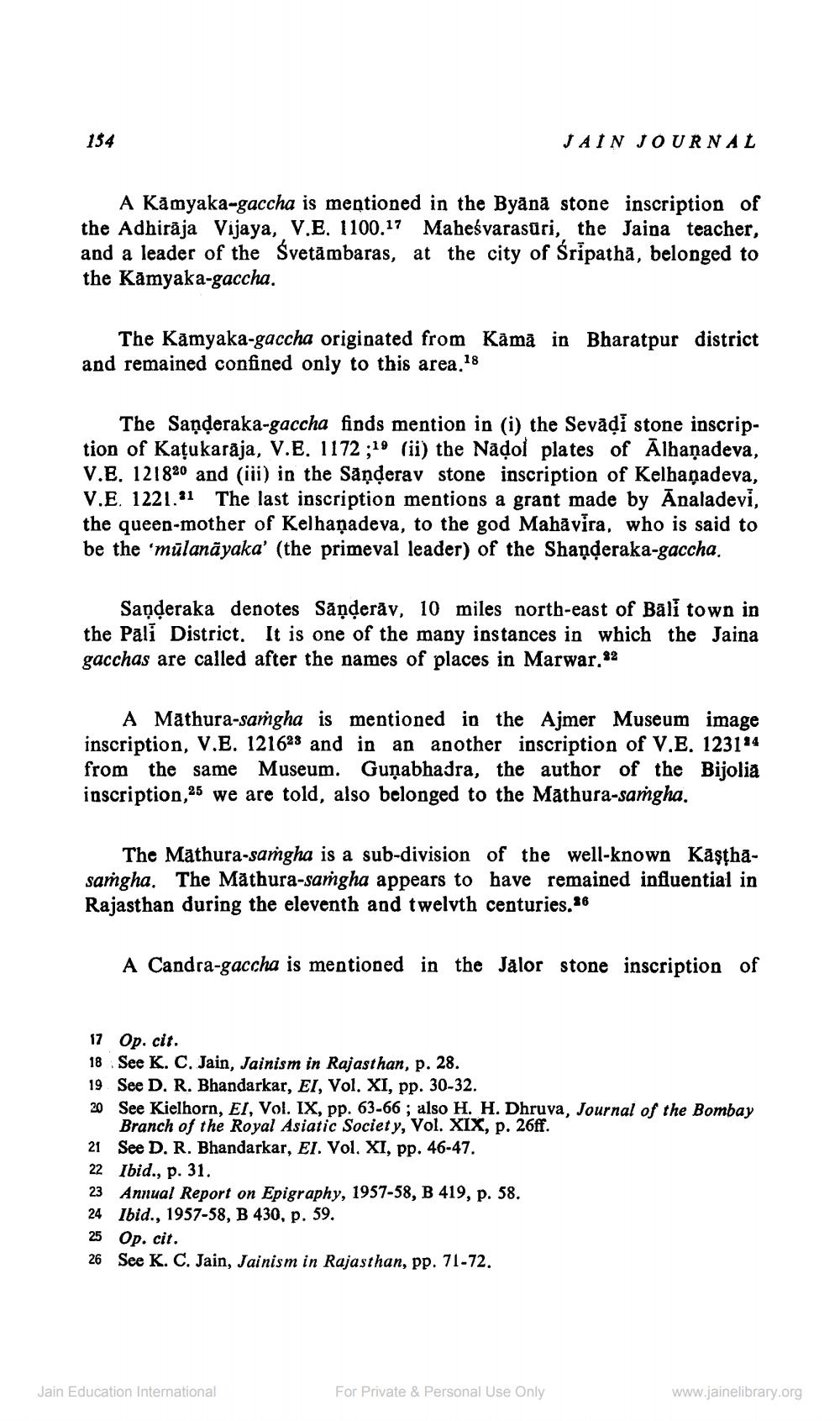________________
154
A Kamyaka-gaccha is mentioned in the Byānā stone inscription of the Adhiraja Vijaya, V.E. 1100.17 Maheśvarasuri, the Jaina teacher, and a leader of the Svetambaras, at the city of Sripatha, belonged to the Kamyaka-gaccha.
The Kamyaka-gaccha originated from Kāmā in Bharatpur district and remained confined only to this area.1 18
The Sanderaka-gaccha finds mention in (i) the Sevaḍi stone inscription of Katukarāja, V.E. 1172;19 (ii) the Nadol plates of Alhaṇadeva, V.E. 121820 and (iii) in the Sanderav stone inscription of Kelhaṇadeva, V.E. 1221. The last inscription mentions a grant made by Analadevi, the queen-mother of Kelhaṇadeva, to the god Mahavira, who is said to be the 'mulanayaka' (the primeval leader) of the Shaṇḍeraka-gaccha.
Sanderaka denotes Saṇḍerāv, 10 miles north-east of Bali town in the Pali District. It is one of the many instances in which the Jaina gacchas are called after the names of places in Marwar. 22
JAIN JOURNAL
A Mathura-saṁgha is mentioned in the Ajmer Museum image inscription, V.E. 121628 and in an another inscription of V.E. 123114 from the same Museum. Gunabhadra, the author of the Bijolia inscription,25 we are told, also belonged to the Mathura-samgha.
The Mathura-saṁgha is a sub-division of the well-known Kāṣṭhāsamgha. The Mathura-samgha appears to have remained influential in Rajasthan during the eleventh and twelvth centuries.26
A Candra-gaccha is mentioned in the Jalor stone inscription of
17 Op. cit.
18 See K. C. Jain, Jainism in Rajasthan, p. 28.
19 See D. R. Bhandarkar, EI, Vol. XI, pp. 30-32.
20 See Kielhorn, EI, Vol. IX, pp. 63-66; also H. H. Dhruva, Journal of the Bombay Branch of the Royal Asiatic Society, Vol. XIX, p. 26ff.
21 See D. R. Bhandarkar, EI. Vol. XI, pp. 46-47.
22 Ibid., p. 31.
23 Annual Report on Epigraphy, 1957-58, B 419, p. 58.
24 Ibid., 1957-58, B 430, p. 59.
25 Op. cit.
26 See K. C. Jain, Jainism in Rajasthan, pp. 71-72.
Jain Education International
For Private & Personal Use Only
www.jainelibrary.org




